Researchers have successfully restored some movement to the fingers, hand, and wrist of a quadriplegic patient by using recorded signals from his motor cortex, allowing him to perform daily living activities such as pouring from a bottle and stirring the contents. Systems that work by translating neural activity into signals for robotic devices, such as […]
Tag: technology

Solving quantum physics problems with computer games
Computer gamers can teach quantum physicists a thing or two! At least according to the results of a study using an online game platform called Quantum Moves, which presents problems in quantum physics as games. So far the games have been played 500,000 times by about 10,000 different players. The research confirmed that using the […]
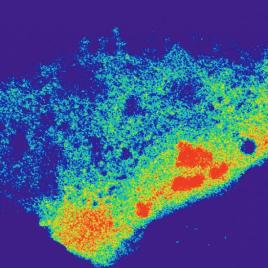
Tracking RNA in real time
By modifying the CRISPR-Cas9 system, typically used for genetic editing, researchers are able to visually track the movement of RNA in living cells. The researchers believe this could be used to study disease-related RNA processes. Many diseases are related to errors in RNA and RNA transcription, such as different cancers and autism. In the future […]

A bird’s eye view of birds
The view seen by humans (left) and drones (right) when trying to count seabird populations from either the ground or the air. (Image credits: Jarrod Hodgson) A new study compares the accuracy of monitoring of sea bird colonies by UAVs and traditional human ground counts and demonstrates that population estimates can be improved with this […]
Measuring the munchies – how much THC is in marijuana edibles?
A new way to more accurately measure the amount of cannabinoids in marijuana edibles was presented at the meeting of the American Chemical society March 15, 2016. In the past measurements were frequently inaccurate as the sugars, fats, and starches found in most edibles would clog the analytical device. By using dry-ice and a silica […]
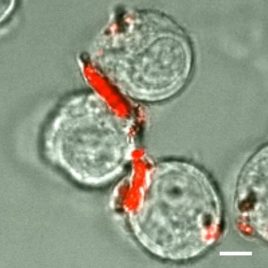
Improving the cellular backpack
Medicine can be delivered to specific parts of the body by fitting it inside a “backpack” and attaching it to white blood cells. This targeted drug delivery means other tissues of the body aren’t affected, and side effects are limited. Original research presented at a meeting of the American Chemical Society on March 17, 2015.
Growing hearts in 3D
Growing realistic human tissue outside the body is now possible thanks to the recently developed “person-on-a-chip” according to researchers at University of Toronto. The new technology, called AngioChip, could one day be used to repair or even replace damaged organs. In the meantime the researchers believe their development offers a new tool for discovering and testing […]
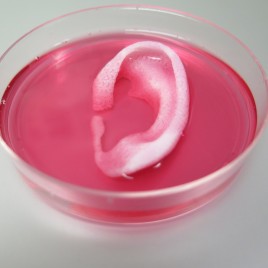
Printing living bones may be possible
Printing bones and cartilage could be the way of the future. Using specialized ‘bioprinters’, researchers have been able to “print” cells into layered patterns reconstructing human body parts. Current 3D printers are unable to create bone and cartilage with enough structural stability. By combining bioprinters with biodegradable polymer materials researchers were able to “create” the […]
Lab in a suitcase provides real-time monitoring of Ebola 
Testing the DNA of the Ebola virus on-site in the field in less than a day is now possible thanks to a new system developed by researchers. Real-time genomic surveillance will provide information on the virus and its rate of evolution – as well as characterizing its response to treatments and vaccines. The kit weighs […]
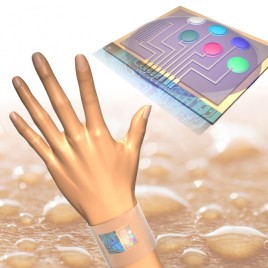
Monitoring biomarkers in real-time
Wearable sensors which measure levels of molecules in a patient’s sweat are now able to provide real-time information on an individual’s physiology and health. Sweat contains much information in the form of metabolites such as glucose, and electrolytes such as sodium, which could be used to help diagnose diseases or identify drug use. The developers […]
Will biometric authentication be creepy or cool?
From fingerprints to iris scans, biometric identification is becoming part of everyday life. As we move to even more complex behavioural and biological biometrics (a password pill or brain wave and gait analysis for example) there are potential benefits and risks which need to be considered and discussed, says Tom Keenan, author of a new […]
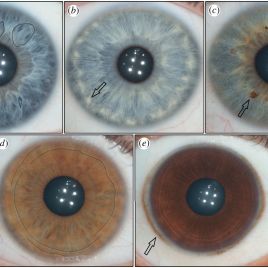
Identifying features of the eye vary by population
Features on the surface of the iris vary widely between individuals of different ancestral groups, according to a new study. Researchers developed a computer program to help identify a variety of features on the iris of subjects with either East Asian, South Asian, or European ancestry. This program allows for a more qualitative assessment than […]
What’s hiding around the corner? This camera knows
Seeing around corners may not be possible for the human eye, but for this camera it’s a breeze. Researchers have developed a camera system that, within three seconds, can locate an object, hidden behind a wall, and track its movement. The system fires a stream of short pulses of light onto the floor just in […]
As tough as tendons on bone: The new hydrogel
Researchers have developed a hydrogel which is more than 90 per cent water and able to adhere to slippery surfaces with the strength of tendon adhering to bone. They believe the gel will be ideal for protective coatings on underwater surfaces, such as boats, oil rigs, and submarines. The hydrogel is able to stick to glass, silicon, […]

De-ice de-ice baby
Water droplets resting on water-repellent surfaces spring away spontaneously in a low-pressure environment, according to a new study . This finding could be used to help develop more advanced anti-icing systems for ships, offshore drilling rigs, and airplanes. The researchers found that as the water evaporated, a difference in pressure caused the drops to spontaneously […]
Use ’em or lose ’em – The case for teaching navigational skills
Schools should teach navigational and map reading skills to ensure future generations do not lose their innate ability to navigate in the world, so says Roger McKinlay, former president of the Royal Institute of Navigation in the United Kingdom. In this commentary, the author argues that turning to technology erodes our innate ability to orientate, […]